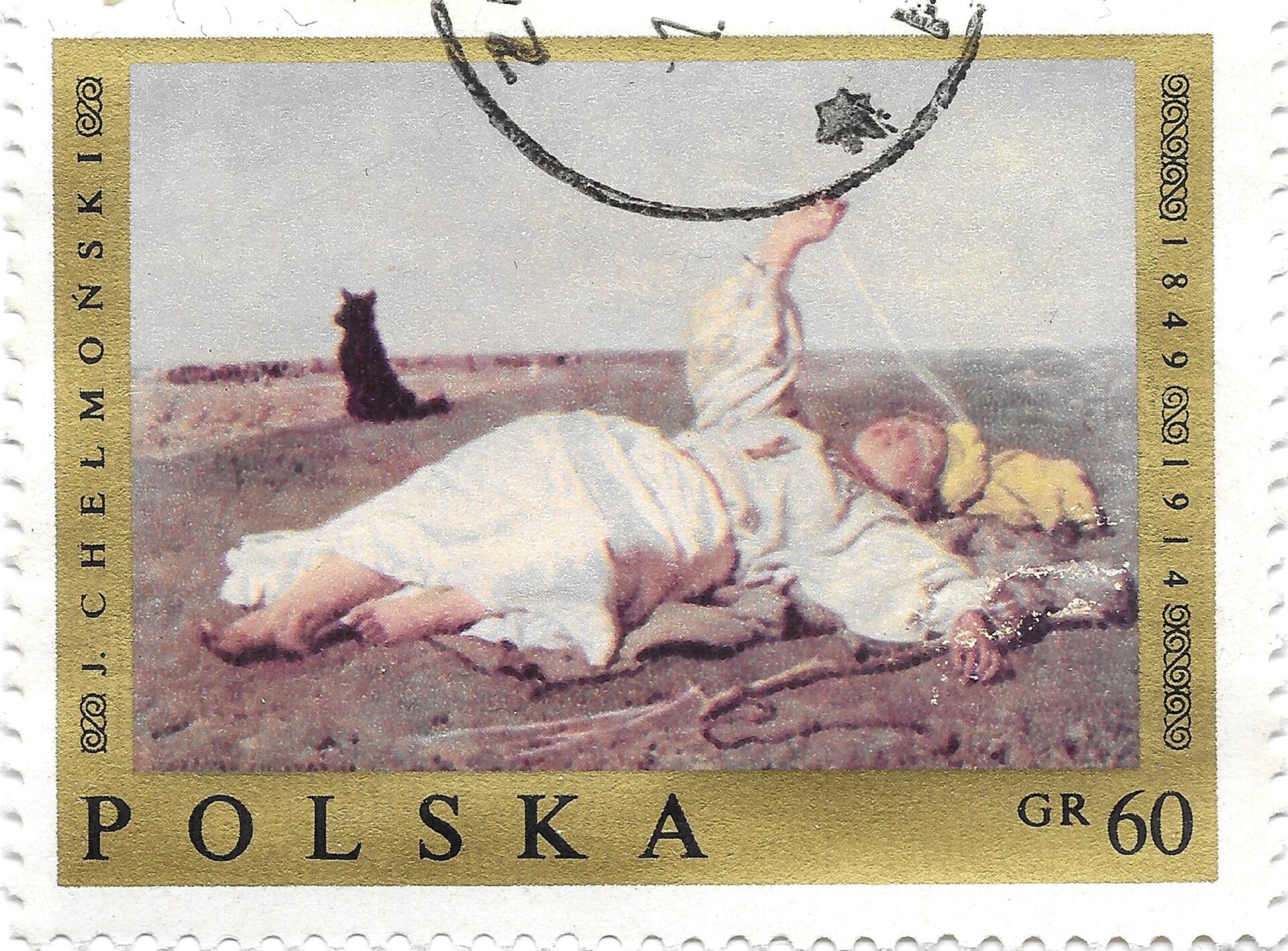“Indian Summer” is one of Chełmoński’s most celebrated paintings, depicting a serene and idyllic rural scene. The painting portrays a young peasant girl standing in a field, seemingly engrossed in the delicate, floating threads of gossamer, which are traditionally associated with the Indian summer period in Poland. The artwork is a beautiful reflection of the simple, yet profound beauty of the Polish countryside, capturing a fleeting moment of natural harmony.
Chełmoński’s “Indian Summer” can be found at the National Museum in Warsaw, where it is part of the museum’s rich collection of 19th-century Polish art. The National Museum in Warsaw is one of the largest and most important museums in Poland, housing a wide array of artworks from different periods, including many by Józef Chełmoński.
Stamp Information
The Polish postage stamp featuring “Indian Summer” (“Babie lato” in Polish) by Józef Chełmoński is part of a series that honours prominent works of Polish art. Józef Chełmoński (1849–1914) was a renowned Polish painter, best known for his realistic depictions of rural life and landscapes, particularly scenes from the Polish countryside.
This stamp is part of a broader tradition in Poland of commemorating national heritage and famous artworks through postage stamps. These stamps serve not only as a means of postage, but also as a way to promote Polish culture and history to the world.
If you like this stamp, you may also like Two Girls, Olga Boznańska 1896 or Woman Combing her Hair, Władysław Ślewiński 1897.

33 year old casual stamp collector from the UK!
